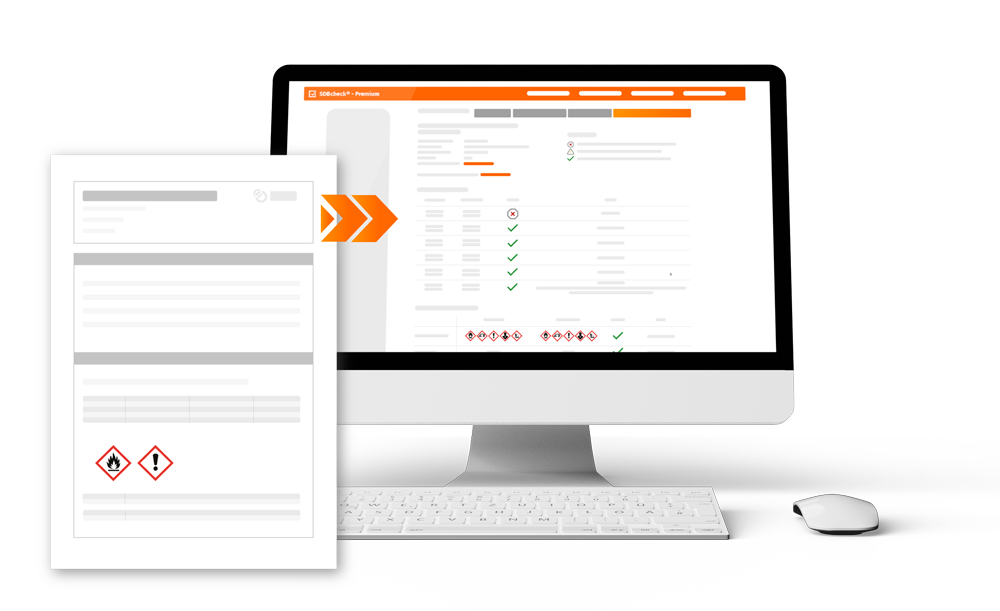If you discover deviations in the safety data sheet, the supplier should be contacted. But what if the supplier does not respond?
Use SDBcheck® to check the safety data sheet in accordance with TRGS 400
Our free online tool SDBcheck® allows you to check the plausibility of the classification and labeling of your supplier safety data sheets. According to TRGS 400 [1], you are obliged to check the safety data sheets you receive and to contact the creator if there are any discrepancies. This is possible with the integrated e-mail dispatch from SDBcheck®.
Deviations in the plausibility check
If SDBcheck® detects deviations during the plausibility check, you will be informed directly on the results page by red crosses. Classification and labeling are determined in accordance with the CLP Regulation [2]. This regulates how the classification and labeling of mixtures are determined on the basis of the ingredients and other information. Unfortunately, in our experience, there are very frequent deviations, with approx. every second SDS checked showing deviations.
E-mail dispatch to the safety data sheet creator
If SDBcheck® has detected deviations, as a registered user you can trigger the sending of an e-mail to the creator. The e-mail address specified as the contact in the SDS is used for this. The recipient of the e-mail receives the results page and can see exactly what was determined by SDBcheck® and what the data basis for this was. In addition, the uploaded SDS is also sent so that the recipient knows which SDS is involved – a new version may already be available. As a user, you also have the opportunity to add your own comments and take advantage of our optional feedback. In doing so, we check again what SDBcheck® determines and whether the deviations are possibly not deviations at all. If the deviations are justified, the e-mail is released and the supplier is notified.
And now?
The first step is to wait and see. Ideally, the supplier will contact you promptly and let you know, for example, why the deviation does not apply. It may also be an error in the safety data sheet that needs to be corrected. Unfortunately, we also learn from our users that not all suppliers are available for queries. In some cases, the e-mail addresses given in the SDS cannot even be reached. In such a case, it is of course more difficult – not continuing to work with the hazardous substance is usually not an option. However, if such problems occur more frequently, it might be worth considering changing suppliers. Ultimately, the review of safety data sheets is also subject to the supervisory authorities. It could therefore also be an option to contact the relevant authority. Of course, not at the first unsuccessful contact attempt, but if the problems become more frequent or no other supplier is available, this would be a possible option. Safety data sheets that are distributed in the EU are ultimately subject to the REACH regulation and must therefore also meet certain legal requirements.
What about the plausibility of your SDS?
Try out SDBcheck® right away! You can also register here for our free webinar to see how to use SDBcheck® live.
[1] Technical Rules for Hazardous Substances, TRGS 400, version 08.09.2017, BAuA website
[2] Regulation (EC) No. 1272/2008 (CLP Regulation), consolidated version REACH-CLP-Biocide-Helpdesk (DE), status 01.03.2022











